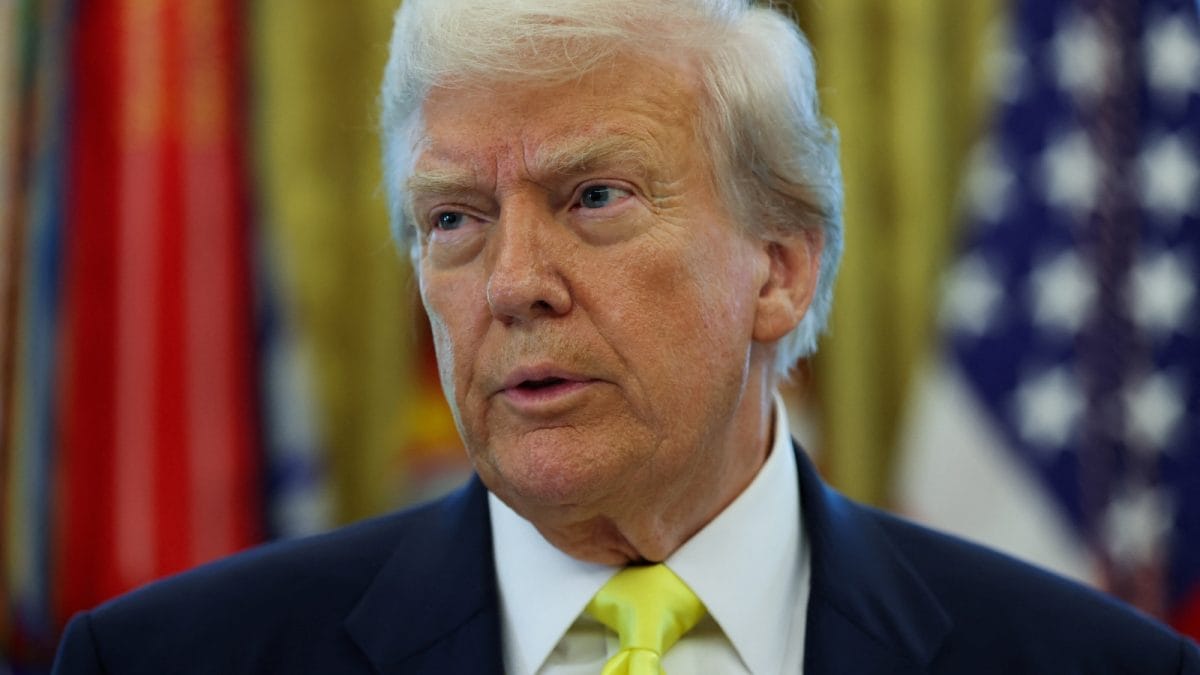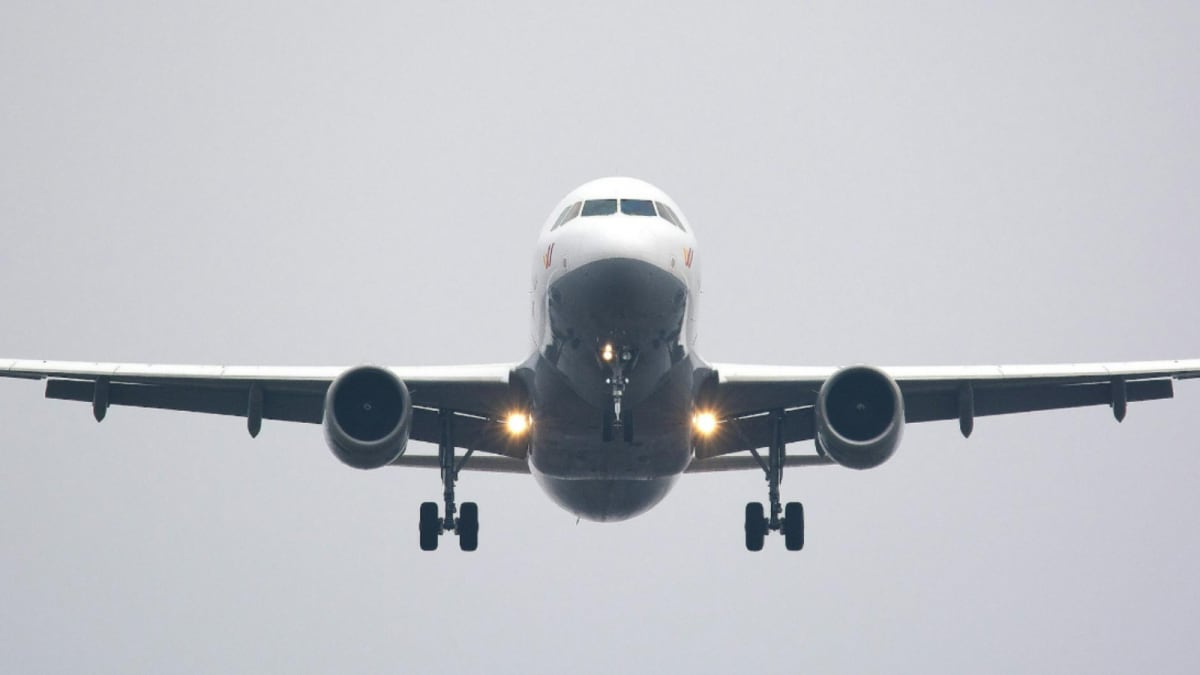Last Updated:
Trump’s sweeping tariffs are adding to rising prices, slowing job growth, and prompting warnings of stagflation, with Americans bearing the cost

US consumer prices are on the rise again, and a large part of the reason lies in President Donald Trump’s sweeping trade policies. (Reuters File)
US consumer prices are on the rise again, and a large part of the reason lies in President Donald Trump’s sweeping trade policies. The latest inflation figures, combined with sharply slower job growth, show that the costs of Trump’s tariff war are no longer just a matter for trade negotiators or Wall Street. They are now hitting the wallets of ordinary Americans.
Prices Climb Despite Early Dips
According to official data cited by The Guardian, the Consumer Price Index (CPI), a measure of the average prices paid by consumers for a fixed basket of goods and services, rose 2.7 per cent in July compared with a year earlier. While this is lower than the peaks seen during the pandemic period, it marks an uptick from the levels seen in spring.
Core inflation, which excludes volatile food and energy prices, rose by 3.1 per cent over the last month, a faster pace than in June. Price increases were especially sharp in dining out and restaurant meals (up 3.9 per cent year-on-year), housing, medical care, and used cars.
Energy prices fell by 1.6 per cent over the year, which helped prevent an even sharper rise in the CPI. But the overall trend is clear: everyday costs for American households are rising again.
How Tariffs Feed Into Inflation
A central driver of the recent price surge, according to The Guardian, is President Trump’s 10 per cent “universal tariff”, a blanket import duty applied to all goods entering the United States since spring 2025. This measure is coupled with higher duties on certain sectors, such as steel and aluminium.
Just last week, Trump announced tariffs ranging from 15 to 50 per cent on 90 countries. Economists say this latest move pushes America’s average effective tariff rate to 18 per cent, the highest since the infamous Smoot–Hawley Tariff Act of 1930, which is widely blamed for worsening the Great Depression by stifling global trade.
Some tariffs, such as those targeting China, have been temporarily delayed by 90 days while negotiations continue. But, as The Guardian notes, many US retailers had stocked up earlier this year to absorb the immediate impact. Those inventories are now running low, prompting companies to pass on the higher import costs to customers — a scenario that executives at Walmart, Nike and Macy’s had warned about months ago.
The Household Cost: $2,400 A Year
The Yale Budget Lab estimates that the higher prices caused by Trump’s tariffs will cost the typical US household $2,400 (roughly Rs 2 lakh) in 2025. For an average American family, this is comparable to an entire month’s rent in many cities or a year’s worth of grocery bills for a small household.
Within that projected increase, clothing costs alone are expected to rise by 37 per cent, while shoe prices could jump 39 per cent. These spikes matter because apparel and footwear are staple purchases, meaning the higher costs are unavoidable.
Economists such as Ben May of Oxford Economics warn that these tariffs are “squeezing household incomes” by raising prices across a wide range of goods, from daily essentials to big-ticket items, effectively reducing consumers’ purchasing power even if their nominal incomes stay the same.
Labour Market Weakens As Tariffs Bite
The impact of Trump’s tariffs is not limited to rising prices; the US labour market is also showing strain. According to the US Bureau of Labor Statistics (BLS), employment figures released earlier this month were sharply revised downwards. What was initially reported as 291,000 jobs created in May and June combined has now been corrected to just 33,000.
American Journalist Steven Greenhouse, in an op-ed in The Guardian, notes that job growth has plunged by more than 70 per cent in the three months since Trump’s April “liberation day” tariffs, a reference to the large package of trade duties unveiled on 2 April. The uncertainty and higher costs from these measures, he writes, have made corporate executives hesitant to invest or expand, slowing hiring across industries.
Manufacturing output has also weakened. Motorcycle maker Harley-Davidson has cut production due to tariff-related uncertainty and higher expenses, while carmaker Ford reported an $800 million drop in quarterly profits linked to increased input costs.
Stagflation Fears Resurface
Several economists now warn of a possible return to stagflation, the toxic mix of high inflation and stagnant growth last experienced in the US in the 1970s. Stagflation is particularly hard to tackle because the usual tools to fight inflation (like raising interest rates) can make growth even slower, while measures to stimulate growth risk fuelling further inflation.
BMO Economics (the research and analysis arm of the Bank of Montreal, one of Canada’s largest financial institutions) told The Guardian that “economic activity and job growth are sputtering under the weight of higher tariffs, increasing inflation and rising economic policy and trade uncertainty.”
Such conditions, BMO warns, could push the US economy towards a slowdown even as household costs continue to climb, creating a scenario where both consumers and businesses are squeezed simultaneously.
Political And Institutional Fallout
Trump’s economic policies are also fuelling political tension with US institutions. He has repeatedly pressed the Federal Reserve to cut interest rates, arguing it would spur growth. However, higher inflation makes rate cuts less likely, as the Fed’s dual mandate is to balance price stability with maximum employment.
The President has attacked the Bureau of Labor Statistics (BLS) over job data, firing Commissioner Erika McEntarfer shortly after the weak July report and nominating EJ Antoni, a long-time critic of the agency, to the post.
He has also targeted Fed Chair Jerome Powell, even threatening to sue him over what he called mismanagement of building renovations, a highly unusual move for a sitting president.
The ‘Trade War’ Reality Check
Trump has repeatedly described his tariffs as a “historic trade win,” claiming they bring “massive amounts of cash” into the US Treasury. While it is true that tariffs generate revenue for the government, economists stress that this money ultimately comes from US importers and consumers in the form of higher prices.
Trump’s stated goal has been to bring manufacturing back to the US. There have been some headline-grabbing announcements in that direction, such as Apple’s $100 billion pledge to invest in advanced manufacturing domestically, and General Motors’ decision to increase production of certain truck models in Indiana while reducing output in Canada.
However, experts note that these examples are limited in scale and may not represent a sustained manufacturing revival. One key reason: business uncertainty.
Corporate planners are reluctant to commit billions to new factories when tariff rates can change with little notice, depending on shifting political calculations. Greenhouse, in his op-ed, argues that Trump’s frequent threats and sudden changes in trade policy risk deterring the very investment he seeks to attract.
This unpredictability raises questions about whether the “trade wins” are truly lasting gains, or short-term deals that come at a broader economic cost.
Why It Matters
The United States is the world’s largest consumer market, and changes in its economic conditions ripple globally. For American households, tariffs are no longer an abstract policy tool, they are a tax on everyday consumption, pushing up the cost of living at a time when job growth is slowing.
For Trump, the tariffs are a signature political and economic strategy. But for millions of Americans, the trade gamble is already translating into higher bills, reduced purchasing power, and an economy that may be inching closer to stagflation.

Karishma Jain, Chief Sub Editor at News18.com, writes and edits opinion pieces on a variety of subjects, including Indian politics and policy, culture and the arts, technology and social change. Follow her @kar…Read More
Karishma Jain, Chief Sub Editor at News18.com, writes and edits opinion pieces on a variety of subjects, including Indian politics and policy, culture and the arts, technology and social change. Follow her @kar… Read More
view comments
Read More






